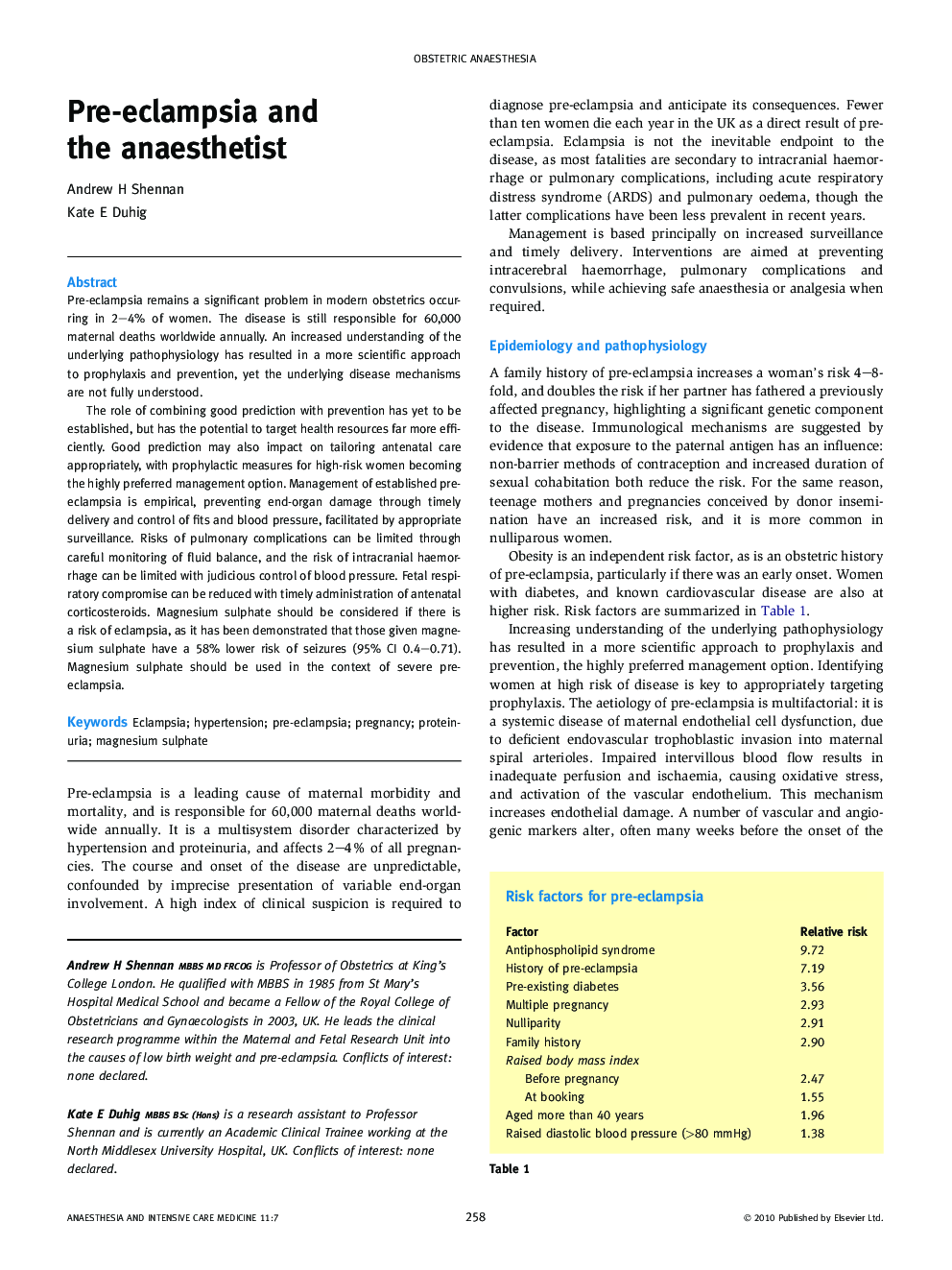| Article ID | Journal | Published Year | Pages | File Type |
|---|---|---|---|---|
| 2742999 | Anaesthesia & Intensive Care Medicine | 2010 | 4 Pages |
Pre-eclampsia remains a significant problem in modern obstetrics occurring in 2–4% of women. The disease is still responsible for 60,000 maternal deaths worldwide annually. An increased understanding of the underlying pathophysiology has resulted in a more scientific approach to prophylaxis and prevention, yet the underlying disease mechanisms are not fully understood.The role of combining good prediction with prevention has yet to be established, but has the potential to target health resources far more efficiently. Good prediction may also impact on tailoring antenatal care appropriately, with prophylactic measures for high-risk women becoming the highly preferred management option. Management of established pre-eclampsia is empirical, preventing end-organ damage through timely delivery and control of fits and blood pressure, facilitated by appropriate surveillance. Risks of pulmonary complications can be limited through careful monitoring of fluid balance, and the risk of intracranial haemorrhage can be limited with judicious control of blood pressure. Fetal respiratory compromise can be reduced with timely administration of antenatal corticosteroids. Magnesium sulphate should be considered if there is a risk of eclampsia, as it has been demonstrated that those given magnesium sulphate have a 58% lower risk of seizures (95% CI 0.4–0.71). Magnesium sulphate should be used in the context of severe pre-eclampsia.
